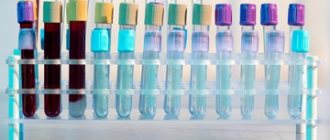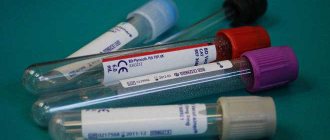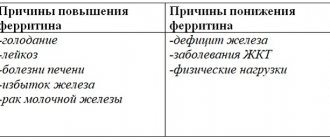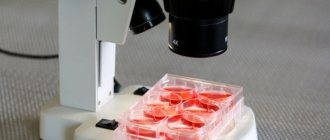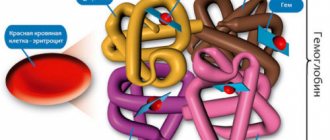Rheumatoid arthritis is a chronic disease that belongs to the group of autoimmune pathologies. The disease systemically affects connective tissues, mainly joints. In this case, their destruction occurs, similar to progressive erosive-destructive polyarthritis. The nature of the disease is not clear. The percentage of cases is approximately 0.5-1%.
Rheumatoid arthritis must be diagnosed as early as possible in order to promptly apply modern treatment methods. In an advanced stage, the disease can lead to loss of ability to work and even disability. Therefore, you should not postpone the examination for a long time.
Cyclic citrullinated peptide - what is it?
Let's figure out what a blood test for ACCP is. Citrulline is an amino acid. It does not take part in protein synthesis, but is a marker during the onset of the disease. The synovium of the joint produces a protein called citrullinated peptide. Protein does not perform a construction function and its production is determined by the body as the appearance of something foreign in the body. The citrullination reaction is determined by physiological and pathological reasons. Having detected the invasion of a foreign body, the body begins to produce immunoglobulins, which, with the help of antibodies, try to destroy this protein. The body's immune response begins.
Description of the ACCP blood test
Citrulline is a substance produced as a result of metabolic processes in the body. It arises from amino acids as a consequence of biochemical reactions. In the normal state of the body, citrulline is completely eliminated from it, without participating in protein production.
Rheumatoid arthritis changes the enzyme composition of a person's blood. The body perceives the peptide, which is a component of citrulline, as a foreign object. As soon as it appears, the body’s immune system begins to actively produce specific antibodies aimed at combating cyclic citrullinated peptide.
The ACCP test gives a specific result that allows you to determine the presence of arthritis. In essence, the analysis is a marker of the disease. ACCP is a group of heterogeneous antibodies that detect antigens of proteins containing citrulline.
Indications for testing
The disease can develop and not manifest itself for many years, and the appearance of pain indicates that the disease is advanced, that destruction of the joint and bone tissue is occurring. Many people know about their body’s predisposition to arthritis and monitor the ACCP indicator; for some, the doctor prescribes the test, focusing on the following indications.
- the presence of pain or swelling in the joints, including small ones, for two months;
- observation of joint inactivity in the morning;
- detection of neoplasms, such as cysts in the periarticular areas;
- pain in the joints when an infectious lesion is excluded;
- drawing up a treatment plan and preventing the occurrence of joint deformities during the initial stage of the disease;
- Various types of arthritis can trigger the appearance of anti-csp.
Arthritis treatment
When the disease becomes chronic, it is necessary to be under the supervision of a doctor. It constitutes a set of therapy measures aimed at alleviating pain and blunting the development of the disease. During treatment, medications are prescribed that reduce inflammation. This blocks the development of enzymes.
Basic drugs include Leflunomide, Azathioprine, Cyclophosphamide, Cyclosporine. You need to take them for at least six months. They are cytostatic drugs, antimalarials, sulfonamides and D-penicillamines.
Glucocorticosteroid hormonal drugs are Dexamethasone, Triamcinolol, Prednisolone. They are prescribed because they relieve pain and are used as part of a set of therapy measures.
Protein medications have an effect on the immune system and reduce inflammation.
In severe cases, surgery is used.
Your lifestyle changes dramatically, you need to give up bad habits, plan your daily routine, do exercises every morning, and switch to proper nutrition.
Features of preparation for analysis
Preparation begins 5 days before blood sampling. First, there is a refusal to use medications. Please discuss this with your doctor. For three days, spicy, fatty, and salty foods are excluded from the diet. smoked, fried food. Stop smoking, coffee, lemonade, and juices within 24 hours. The use of a nicotine patch is possible, but not recommended. Eating food, including sweets, lollipops, and chewing gum, is contraindicated 12 hours before. Reduce physical activity to a minimum level within 6 hours. The recommended time for testing is morning. Interpretation of the result is possible only by a doctor; self-diagnosis is excluded.
Attention! Violation of the recommendations may affect the results of the analysis, which means that an error is possible when making a diagnosis.
Prevention
To reduce the risk of occurrence and development of this disease, it is necessary to lead a healthy lifestyle. You need to get rid of all bad habits: you can’t smoke, drink alcohol. It is necessary to monitor your health and treat colds in a timely manner, as they can trigger the development of RA. Rheumatoid arthritis is a serious disease that develops into a chronic stage. It is required to be under constant supervision of specialists.
Diagnostics plays an important role in identifying and preventing the disease. It is important to conduct a high-quality and timely examination in order to predict future treatment. The main thing is to follow the rules for taking tests so that they are correct and so that an erroneous diagnosis is not made. Improper treatment can cause metabolic disorders. The study of ACCP is important in the modern world, where people do not attach much importance to various ailments. It is easier to prevent than to treat later.
How is the analysis carried out?
A blood test for ACCP is carried out in the morning on an empty stomach; the patient comes to the laboratory. The nurse disinfects the puncture site, the elbow pad, draws blood from a vein, and applies a plaster.
Once in the laboratory, serum is obtained from the sample and illuminated with a laser. The reflection of the rays shows the level of the ADDC. If there is no laboratory in the locality, then the blood is transported at a temperature of +2 +6 degrees. She is kept in this regime for up to six days. If it is necessary to increase the shelf life, then liquid nitrogen is used, and the blood can be defrosted only once.
The results are usually released a day after the collection, in paid clinics within a few hours.
What is the analysis methodology?
Blood for testing is taken from a vein. The tests require serum, so the first step is to process the blood in a centrifuge. The resulting whey should be stored for a week at +8 °C. A test tube study is being conducted. During testing, the method of scattering a laser beam in a liquid medium is used.
Indicator norm
ACCP norms vary in childhood and adulthood. The meanings are the same for women and men. The degree of development of the disease depends on the level of the indicator. Even with minimal deviation values, a person is under the supervision of doctors and is tested annually for antibodies to cyclic citrulline peptide. Early detection of the disease will speed up the healing process.
| Adults from 16 to 60 | Elderly from 60 | Children under 16 |
| 3.8-4 U/ml | 2 or more units/ml | 2.7 U/ml |
Types of diagnostics
There are two main types of diagnostics:
- Analysis for rheumatoid factor (RF).
- Analysis of antibodies to cyclic citrullinated peptide (ACCP).
RF is used quite rarely, as it is specific and makes it possible to identify other joint pathologies. The second type of study makes it possible to more accurately determine the presence of the disease and its severity.
The test is considered the most modern method for detecting antibodies to cyclic citrullinated peptide. Today this is the most accurate way to diagnose the early stages of the disease.
ACCPs begin to be produced in the human body at the initial stage of the disease. This occurs several years before the first symptoms of the pathology appear.
Other blood testing options, such as rheumatoid tests and rheumatoid factor, detect the presence of the disease at later stages, when it is almost impossible to reverse the process.
Disease development indicator level
Knowing these boundaries, the doctor can draw conclusions about the severity of the disease and prescribe effective treatment. If ACCP for rheumatoid arthritis is on the verge of normal, then the second month the diagnosis is repeated and the doctor can make a conclusion based on the dynamics of changes.
| Negative meaning | Weakly positive value | Positive value | Positive strong meaning |
| Up to 5 U/ml | From 5 to 10 U/ml | From 10 to 17 U/ml | From 107 U/ml |
The essence of the ACDC test
Rheumatoid arthritis is a systemic disease. It has a damaging effect on articular connective tissue. Its main manifestation is the occurrence of chronic inflammation of the joints. Rheumatoid arthritis begins with inflammation of the synovial membrane. This leads to the cartilage tissue gradually being destroyed and deformation of the joint. If this type of arthritis is not diagnosed in time, the consequences can be very serious. In particular, the joint will be deformed, which will impair its mobility, and ultimately lead to the person becoming disabled.
The ACCP test has become a pioneering discovery for the diagnosis and positive course of rheumatoid arthritis.
To diagnose rheumatoid arthritis, you need to know what the concentration of two antibodies is in the body:
- ACCP (cyclic citrullinated peptide antibodies);
- RF (rheumatoid factor).
Analysis of ACCP for rheumatoid arthritis gives an accurate result, and deciphering the test makes it possible to determine the pathological process at an early stage. As for the test for rheumatoid factor, it is quite specific, its reliability is largely determined by the duration of the disease. In approximately 50% of cases the result is positive within 6 months from the onset of the disease, and in 85% the result will be positive within 2 years from the onset of the disease.
The essence of the test is to determine the level of antibodies in the patient’s blood relative to cyclic citrullinated peptide. This peptide is involved in normal metabolism. The formation of citrulline is promoted by arginine, which is an amino acid.
If joint damage occurs in the body, then citrulline begins to be integrated into the protein chain. For the immune system, the peptide that includes citrulline is foreign, and therefore it begins to produce antibodies against it.
Rheumatoid factor is detected if the liver is affected, if there is oncology or a severe stage of tuberculosis.
Advantages and features of the method
The ACCP analysis makes it possible to diagnose rheumatoid arthritis in 50% of patients in the first 6 months from the onset of the disease, and by the end of the year, the accuracy of the study reaches 85%, while previously the analyzer for making this diagnosis was rheumatoid factor and the detection rate of patients was 35% in the first year of the disease.
An increase in the ACCP indicator is associated not only with rheumatoid arthritis, but also with lupus, in the presence of other changes in the body. The dynamics of changes in antibody concentrations allows one to make predictions about the outcome of the disease or its progression. If the treatment is successful, then the decrease in ACCP returns to normal, and vice versa, if the treatment is incorrectly selected, the neglect of the disease is reflected in an increase in the level of ACCP.
Maximum permissible values
The value of the ACCP depends on the diagnostic method. Standard method (ELISA) - shows no more than 3-5 units/liter in men or women:
- less than 3 – negative result;
- less than 5 – weakly positive;
- more than 5 is a reason for further examination (suspicion of rheumatoid arthritis).
With chemiluminescence, the norm for ACCP is 16-17 units/l.
For enzyme immunoassay diagnostics:
- up to 30 units – maximum permissible norm;
- up to 90 – weakly positive reaction;
- more than 90 – positive result.
The results are fair for patients of any gender and age. The indicator is studied over time, for which blood is donated once a month or more often (at the discretion of the doctor).
When the ACCP value is higher than normal, but there is no arthritis
In the previous section, we said that sometimes a high ACCP is detected in lupus. In addition, this analysis can be used to diagnose liver diseases, for example, cirrhosis, cancer, and autoimmune diseases, complicated forms of tuberculosis.
On a note! To make such dangerous diagnoses, it is necessary to conduct additional examinations, which are prescribed and deciphered by the doctor.
What can affect the result
The growth of antibodies may be due to another pathology
The reasons for indicators above normal may be other pathologies:
- systemic lupus erythematosus,
- Hashimoto's thyroiditis,
- juvenile idiopathic arthritis,
- autoimmune hepatitis,
- psoriatic arthritis,
- Sjögren's syndrome,
- dermatomyositis,
- granulomatosis with polyangiitis,
- systemic scleroderma.
A false negative result is detected when there is an increased concentration of immunoglobulins in the blood (hypergammaglobulinemia).
Is it possible to get tested anywhere?
Basically, you will have to pay a private laboratory for this analysis. Antibodies were discovered in 1998, and the laser equipment needed for research is practically non-existent in government institutions. The price of the analysis is quite high, about 1000 rubles. In remote regions of the country, it is difficult to pay for the study, so the blood is transported to laboratories that have the technical ability to conduct the study.




